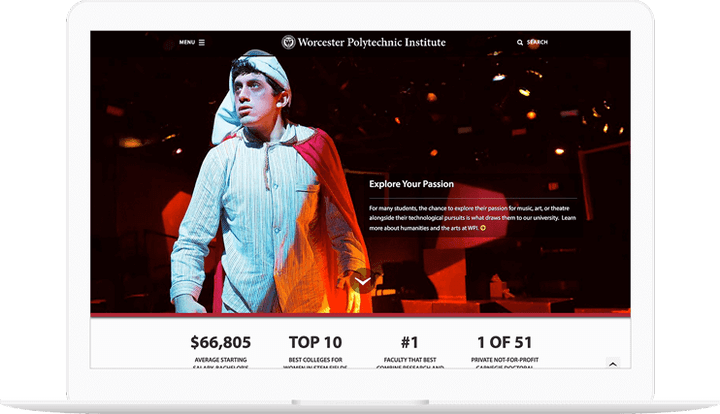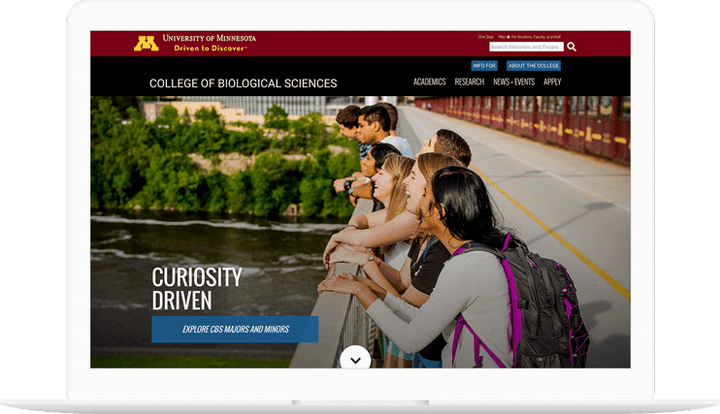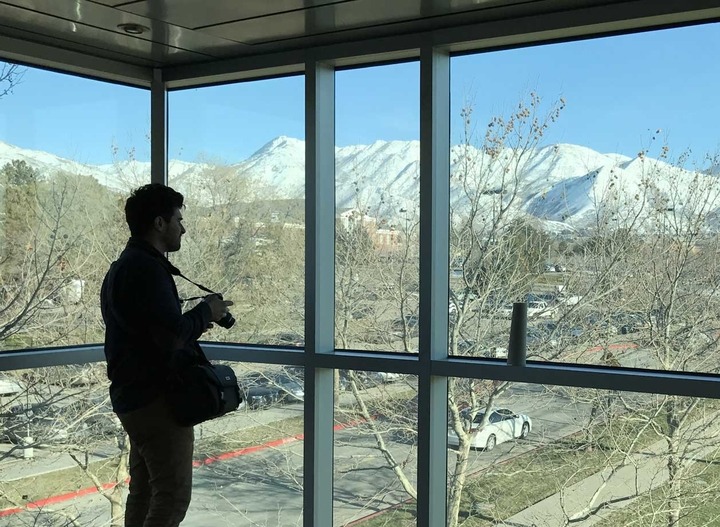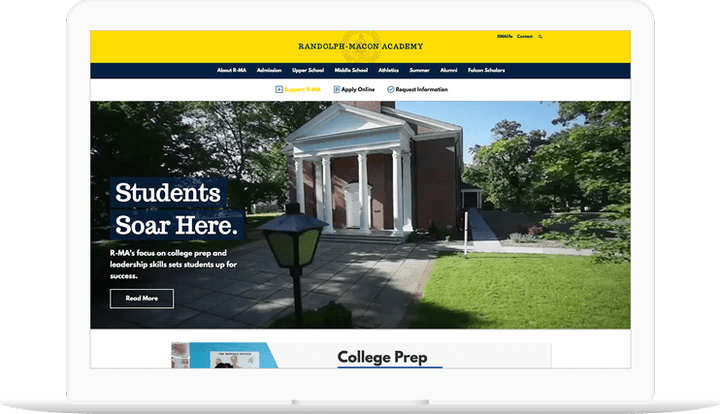We're proud to provide services to our friends in Education.
Worcester Polytechnic Institute
Building the new WPI.edu.
Comprehensive involvement from start to finish.

Building the new WPI.edu.
Drilling down to an education.

Looking before we leap.
Annual Fund’s 25th Anniversary Campaign.
University of Minnesota
Redesigning the College of Biological Sciences.
Implementing fresh designs with improved pathways and navigation.

Redesigning the College of Biological Sciences.

Exploration and research.
Randolph-Macon Academy
The new RMA.edu.
Compelling design focused on furthering the school’s mission.

The new RMA.edu.
Agile Drupal migration.
Swarthmore College
National Census of Writing.
A web data explorer for use by the general public and qualified researchers alike.

National Census of Writing.
University of Southern Mississippi
Implementing A Digital Media Strategy With Measurable Results
Using Drupal 8 and Acquia to increase site engagement on USM.edu

Implementing A Digital Media Strategy With Measurable Results